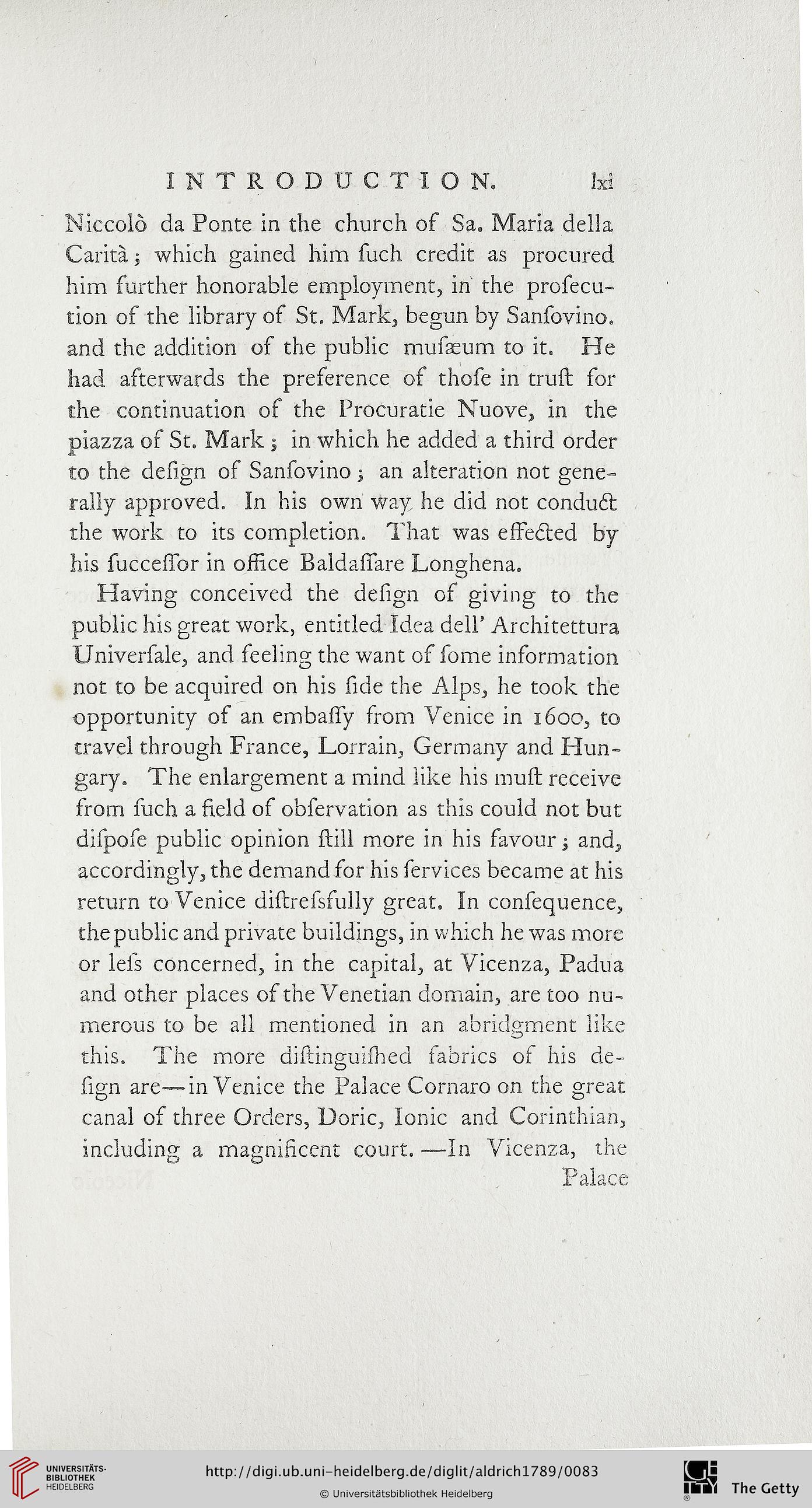INTRODUCTION.
Ixi
Niccolo da Ponte in the church of Sa. Maria della
Carita; which gained him such credit as procured
him further honorable employment, in the prosecu-
tion of the library of St. Mark, begun by Sansovino,
and the addition of the public musaeum to it. He
had afterwards the preference of those in trull for
the continuation os the Procuratie Nuove, in the
piazza os St. Mark ; in which he added a third order
to the design of Sansovino; an alteration not gene-
rally approved. In his own way he did not condubl
the work to its completion. That was effedted by
his succesTor in office Baldassare Longhena.
Having conceived the design of giving to the
public his great work, entitled Idea delP Architettura
Universale, and feeling the want of some information
not to be acquired on his side the Alps, he took the
opportunity of an embassy from Venice in 1600, to
travel through France, Lorrain, Germany and Hun-
gary. The enlargement a mind like his mult receive
from such a field of observation as this could not but
dispose public opinion Hill more in his favour j and,
accordingly, the demand for his services became at his
return to Venice distresssully great. In consequence,
the public and private buildings, in which he was more
or leis concerned, in the capital, at Vicenza, Padua
and other places of the Venetian domain, are too nu-
merous to be all mentioned in an abridgment like
this. The more diltinguished fabrics of his de-
sign are-—in Venice the Palace Cornaro on the great
canal of three Orders, Doric, Ionic and Corinthian,
including a magnificent court. —In Vicenza, the
Palace
Ixi
Niccolo da Ponte in the church of Sa. Maria della
Carita; which gained him such credit as procured
him further honorable employment, in the prosecu-
tion of the library of St. Mark, begun by Sansovino,
and the addition of the public musaeum to it. He
had afterwards the preference of those in trull for
the continuation os the Procuratie Nuove, in the
piazza os St. Mark ; in which he added a third order
to the design of Sansovino; an alteration not gene-
rally approved. In his own way he did not condubl
the work to its completion. That was effedted by
his succesTor in office Baldassare Longhena.
Having conceived the design of giving to the
public his great work, entitled Idea delP Architettura
Universale, and feeling the want of some information
not to be acquired on his side the Alps, he took the
opportunity of an embassy from Venice in 1600, to
travel through France, Lorrain, Germany and Hun-
gary. The enlargement a mind like his mult receive
from such a field of observation as this could not but
dispose public opinion Hill more in his favour j and,
accordingly, the demand for his services became at his
return to Venice distresssully great. In consequence,
the public and private buildings, in which he was more
or leis concerned, in the capital, at Vicenza, Padua
and other places of the Venetian domain, are too nu-
merous to be all mentioned in an abridgment like
this. The more diltinguished fabrics of his de-
sign are-—in Venice the Palace Cornaro on the great
canal of three Orders, Doric, Ionic and Corinthian,
including a magnificent court. —In Vicenza, the
Palace





